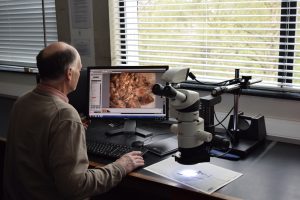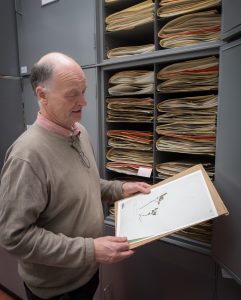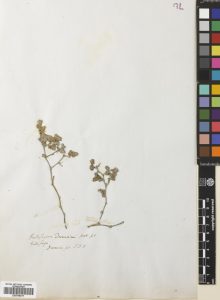The Herbarium of the Royal Botanic Garden Edinburgh dates back over 150 years to the mid-19th century and there are new and exciting specimens still to be discovered among the three million specimens. Two years ago Martin Gardner, one of the botanists at RBGE, unexpectedly came across two specimens of the borage family (Boraginaceae) collected by Charles Darwin during his visit to the Galapagos Islands in 1835. These specimens were later studied by Darwin’s close colleague Joseph Dalton Hooker who discovered that both of these plants were new species. He called this one Galapagoa darwinii in celebration of the Ecuadorian islands and Charles Darwin. Commonly known as ‘crinklemat’ it is now recognised as Tiquilia darwinii.
Charles Darwin was sixteen when he came to study medicine at the University of Edinburgh in 1825. But he lasted only two years, finding the anatomical dissections so abhorrent that he ran out of one class. However, he did enjoy studying the coastal marine life with Robert Grant, and became immersed in the scientific development and the geological observations of James Hutton – which helped form his theory of Evolution.
At the beginning of the Beagle’s voyage, Darwin’s preference for geology and zoology meant that his plant collecting was less enthusiastically carried out. However, following a letter from his mentor and friend, Professor Henslow of Cambridge, in which Henslow stressed his desire to receive plant specimens, he began to pay more attention to the vegetation he came across. Therefore, when he reached the Galapagos Islands, he managed to collect 173 different plants in six weeks which is nearly a quarter of the islands’ flora known today.
Find out about some of the moss specimens collected by Darwin in this Botanics Story.

Working with specimens in the Herbarium
References
Porter, D. M. 1980. Charles Darwin’s plant collections from the voyage of the Beagle. Journal of the Society for the Bibliography of Natural History 9: 515-525. PDF A879#



1 Comment
1 Pingback